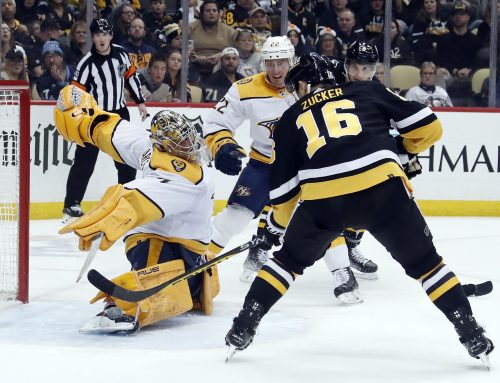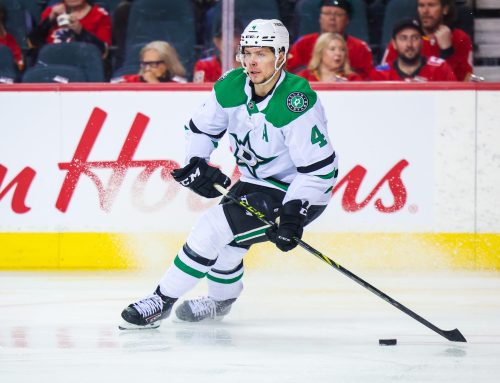
This week's Capped breaks down Brent Burns’ new contract.
****
News out of San Jose on Monday was that Brent Burns was getting closer to signing an extension. Usually this means that within a month, or maybe a couple of weeks, a deal gets done. Nope, we had one the next day. The deal kicks in as of next season, and is a $64 Million deal that spans the next eight years. Eight years is the maximum term for a contract as-per the new collective bargaining agreement. Burns will be 40 when the deal expires.
The fact that the deal was completed and signed so quickly brings out the thought that both Burns and management in San Jose wanted to get a deal done, and had the same goals in mind. The biggest goal though, is that the Burns signing keeps the Stanley Cup window open in San Jose for a few more years.
The key points of the contract come down to the term, the average annual value (AAV) and the uneven distribution of the yearly salary. The deal also included a modified No-Trade-Clause (NTC) where every year on July 1st, Burns submits a list of three teams to which he would accept to be traded, should San Jose look to move him. Burns had this clause written into his last contract as well, that he signed in 2011 with the Minnesota Wild. However, the contract extension did not kick in until 2012, and he was traded to the San Jose Sharks before that occurred. He has had five full, successful seasons in San Jose, reaching a Stanley Cup final last year (and completing his evolution into the real life version of Chewbacca – look-up “the evolution of Brent Burns” if you don’t know what I’m talking about). Anyways, let’s get back to analyzing the contract.
The Term
It seems as though contracts nowadays are being signed with only the next few years in mind. The General Managers all seem to have very shortsighted vision, and do not learn from previous failed long term contracts. Burns plays a style of game that is very physical, very imposing, and very difficult to keep up with age. Players like him tend to decline faster and sooner than the players whose games are built around finesse and hockey-sense. One possibility for down the line, if Burns is unable to keep pace with the faster forwards coming down on him, is to switch him back up to forward. Burns played the right-wing position very effectively for San Jose for a year and a half between 2012 and 2014. He could make for a great grinder over those last few years if the age causes him to be played out of his position.
On the short end of the spectrum, San Jose has locked down one of their top players, and with a core including Joe Thornton, Logan Couture, Joe Pavelski, Marc-Edward Vlasic and Martin Jones, will threaten the West come playoff time again this year.
The AAV and Worth
Burns’ new eight-year contract worth $64 Million comes out to a salary cap hit of $8 Million a season. This will make Burns the second highest paid defenceman behind only P.K. Subban. Rounding out the top five, we have Victor Hedman, Shea Weber and Dustin Byfuglien. This is pretty much a who’s who list of the top fantasy defencemen not named Erik Karlsson. What this means, is that Burns is right up where he belongs in terms of getting paid. Burns is also a top five fantasy defenceman, and should be rostered as such, even in cap leagues.
At the time of writing, Burns sits third in the league in points, and is first in shots by a mile. Burns is averaging over four shots a game, while no other defenceman is averaging over three. There really isn’t another fantasy defenceman that brings to the table what he does. San Jose understands how dynamic a player he is, and how much he can change the game. That is why, without hesitation, they are comfortable spending 11% of their cap space on one player.
The Salary Spread
Unsurprisingly, Brent Burns’ new contract has a payment structure that is slightly modified to have a larger amount of the money paid out in the first few years. Burns will make $10 Million in each of the first four seasons, before it gets reduced down to $7.5 Million, $6.5 Million, $5 Million and $5 Million over the last four seasons. This kind of structure is advantageous to both the team and the player for many reasons.
In the case of the team, lengthening the deal with a couple of years at the end where Burns is paid less money (in this case $5 Million a season), brings down the AAV, and allows for a little more flexibility under the $73 Million dollar salary cap.
For the player, the extra years provide more stability, and it seems as though Burns is going to be playing out the remainder of his career in San Jose. Should he retire early, his contract will actually come off of the books, as it was signed before the age of 35. Burns also gets the majority of his money up-front, and who wouldn’t want more of their money during the early parts of a contract? The NTC also allows Burns to stay settled in San Jose, and not have to uproot his current family of four.
Conclusion
Not much else to it. This is a win for both sides in the short term, and something San Jose can deal with in the longer term. For Burns’ fantasy owners, at least it is not a deathblow. He won’t be the bargain that he is this season, and has been the last few years, but he is still a very valuable player to roster, and you will be getting the production that you are paying for. The most interesting part to monitor now is if San Jose will decide to bring Joe Thornton back to keep intact their dominant power play.
As always, comments and questions are welcome. Thanks for reading!
One Comment
Leave A Comment
You must be logged in to post a comment.





 FLA
FLA CHI
CHI NYR
NYR PIT
PIT L.A
L.A COL
COL CAR
CAR MIN
MIN VGK
VGK N.J
N.J CBJ
CBJ BOS
BOS


GMs really excel at shooting themselves in the foot, don’t they? No player should be signed to a long-term contract that has them playing past 35. Few players can maintain their production past that age and their injuries add up over time. Burns was a Band-Aid Boy earlier in his career, which killed me several times in 1-year drafts. I can’t help thinking that he will suffer a serious injury over the next few years.